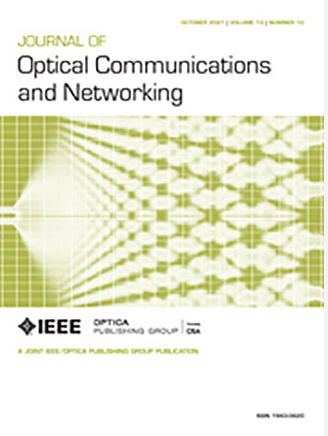Experimental evaluation of low-latency features in optical access networks and home gateways
IF 4
2区 计算机科学
Q1 COMPUTER SCIENCE, HARDWARE & ARCHITECTURE
引用次数: 0
Abstract
With widespread 10 Gbps-capable PON technologies in the access network and Wi-Fi 6E/7 in the home network, final customers can easily enjoy a gigabit experience at home. However, with such enormous bandwidth provided, customers are not always satisfied with their experience, particularly for real-time services, such as VR gaming, cloud gaming, or visio-conferencing, due to network latency issues. In this paper, we focus on optimizing congestion latency that can arise in both home gateway and access networks while keeping an eye on bandwidth-sharing fairness without strictly prioritizing certain traffic. To assess end-to-end performance, our setup includes Internet servers, access/home networks, and customers’ equipment. Transport layer protocols in the TCP/IP model are deployed in both Internet servers and end-user equipment. TCP Prague is implemented to represent time-sensitive services that require a high bitrate, such as VR, and TCP Cubic is used for other common services without low-latency criteria. We create a two-level congestion scenario, configuring different QoS parameters within access equipment and home gateways to compare performance. In our best case, the latency of time-sensitive traffic is at least 10 times lower than other applications and gains more than 30 ms E2E RTT during full congestion scenarios.光接入网和家庭网关低延迟特性的实验评估
随着接入网络中10gbps PON技术和家庭网络中Wi-Fi 6E/7技术的广泛应用,最终用户可以在家中轻松享受千兆体验。然而,在提供如此巨大的带宽的情况下,由于网络延迟问题,客户并不总是对他们的体验感到满意,特别是对于实时服务,如VR游戏,云游戏或视频会议。在本文中,我们着重于优化家庭网关和接入网络中可能出现的拥塞延迟,同时关注带宽共享公平性,而不严格优先考虑某些流量。为了评估端到端性能,我们的设置包括Internet服务器、接入/家庭网络和客户设备。TCP/IP模型中的传输层协议部署在Internet服务器和最终用户设备中。TCP Prague用于表示需要高比特率的时间敏感服务,例如VR, TCP Cubic用于其他没有低延迟标准的常见服务。我们创建了一个两级拥塞场景,在接入设备和家庭网关中配置不同的QoS参数,以比较性能。在我们最好的情况下,时间敏感流量的延迟至少比其他应用程序低10倍,并且在完全拥塞情况下获得超过30毫秒的端到端RTT。
本文章由计算机程序翻译,如有差异,请以英文原文为准。
求助全文
约1分钟内获得全文
求助全文
来源期刊
CiteScore
9.40
自引率
16.00%
发文量
104
审稿时长
4 months
期刊介绍:
The scope of the Journal includes advances in the state-of-the-art of optical networking science, technology, and engineering. Both theoretical contributions (including new techniques, concepts, analyses, and economic studies) and practical contributions (including optical networking experiments, prototypes, and new applications) are encouraged. Subareas of interest include the architecture and design of optical networks, optical network survivability and security, software-defined optical networking, elastic optical networks, data and control plane advances, network management related innovation, and optical access networks. Enabling technologies and their applications are suitable topics only if the results are shown to directly impact optical networking beyond simple point-to-point networks.

 求助内容:
求助内容: 应助结果提醒方式:
应助结果提醒方式:


